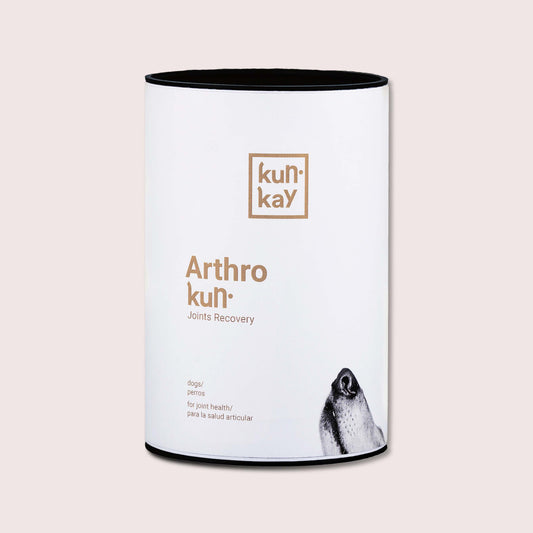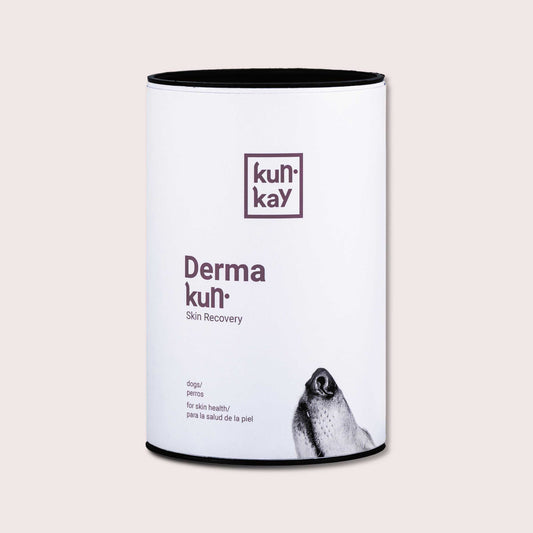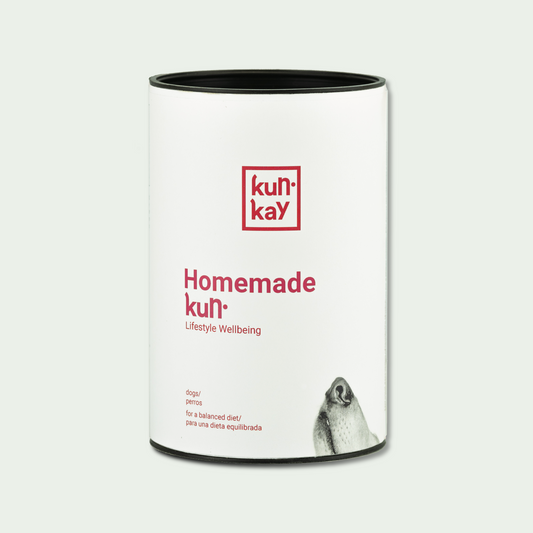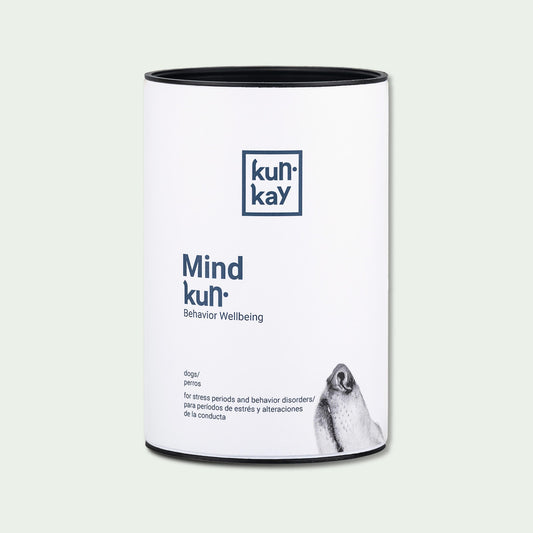Dermatitis in Dogs: Main Symptoms and Treatment

Dermatitis in dogs is a quite common problem that can appear for different reasons and, although it’s not potentially fatal, it does negatively affect the quality of life of the animals that suffer from it. That’s why it’s important to know how to recognize it and what the most appropriate treatment is.
At Kun-Kay we help you care for your pet’s health by making the best natural supplements, rich in vitamins for dogs and with a flavor they love. Our supplements are specially formulated to give your furry friend that extra boost they need to live healthy, strong, and happy. We offer general solutions to balance their diet and specific proposals to provide support in particular moments. We invite you to discover them!
But that’s not all, besides helping you pamper your furry friend with our amazing range of products, we also give you the best advice to monitor their health. For example, in previous articles, we told you how to recognize and act upon common diseases in dogs. In this case, we will focus on dermatitis in dogs, a problem that, although usually not too dangerous, causes a lot of discomfort to the pups. Stay with us and discover what canine dermatitis consists of, its types and causes, and what you can do to help your dog. Let’s go!
1. What is canine dermatitis?

Dermatitis in dogs is a skin condition that can affect dogs of all ages and breeds. It is characterized by an itchy inflammation of the skin that manifests in different ways depending on the causes and causes itching and great discomfort to the animal that suffers from it.
2. Types of dermatitis in dogs

Depending on the origin, we can mainly distinguish between four major types of dermatitis in dogs. Let’s see their key points below:
-
Allergic or atopic dermatitis: This is the most common type of dermatitis in dogs and appears because the dog has a genetic predisposition to develop allergies. You’ll recognize it because it causes intense itching, redness of the skin, appearance of bumps or pustules, dryness, and darkening of the affected area. The allergic reaction can be triggered by one or more of these factors:
- Pollen from flowers.
- Insect bites (fleas, for example).
- Mites.
- Feeds with cereals or wheat.
- Ingestion of something not included in the foods dogs can eat.
- Fungal dermatitis: This problem especially occurs in breeds that have skin folds like the Shar Pei or Bulldog due to the accumulation of fat and moisture in the area. The most common fungus causing dermatitis in dogs is Microsporum canis, and in this case, symptoms are a change in skin color, hair loss, appearance of purulent masses that secrete pus, and dryness.
- Contact dermatitis: That is, a skin reaction because the dog has come into contact with some harmful substance like paint, chlorine, disinfectants, etc. In these cases, inflammation, redness, itching, dryness, and crusts occur.
- Seborrheic dermatitis: This type of dermatitis can be caused by an allergy or by bathing your dog too much, as it weakens the fat layer that protects the skin. The main symptom is that the skin starts producing more fat than necessary and emits a strong and very unpleasant odor.
3. Causes of dermatitis

As you have seen, there are many different types of dermatitis in dogs and the causes that originate them are also very diverse. As a recap, here is a list of the different causes that can lead to this condition:
- Fungi.
- Yeasts.
- Mites.
- Fleas.
- Food allergies.
- Pollen.
- Contact with some allergen or harmful substance.
4. Is it contagious? How to detect it?

Dermatitis in dogs is not contagious to other dogs or humans. However, it should be noted that if it is caused by the bite of some insect or by fungi, there is a risk that another animal could also come into contact with the same cause and develop this problem as well.
The main warning sign of canine dermatitis is excessive scratching or licking. Your dog will suffer irritation and constant itching and will try to relieve it by scratching. Also, each type of dermatitis has specific symptoms; we recommend you take a look at the section where we talk about them to identify the symptoms.
5. How to solve canine dermatitis?

Dermatitis in dogs is usually treated using a specific shampoo, ointments, sprays, or pills. Those problems that have an infectious component, such as those caused by fungi or mites, or are a consequence of some disease will also have a specific treatment recommended by a veterinarian focused on eliminating the origin of the problem. On the other hand, it is important to keep in mind that dermatitis with a genetic origin or caused by allergies cannot be eliminated but their symptoms can be alleviated.
Supplements for dogs are a fundamental support to prevent canine dermatitis and to relieve its symptoms. At Kun-Kay, we have a solution specially designed to care for your dog’s skin and coat, Dermakun, capable of relieving itching and reducing inflammation. It also has a healing power that promotes skin recovery; even if your dog tends to scratch.
Additionally, we also propose our star product to care for your dog’s health integrally: Supergreenkun. This natural supplement serves to complement, balance, and enrich your pet’s diet so they can enjoy robust health.




